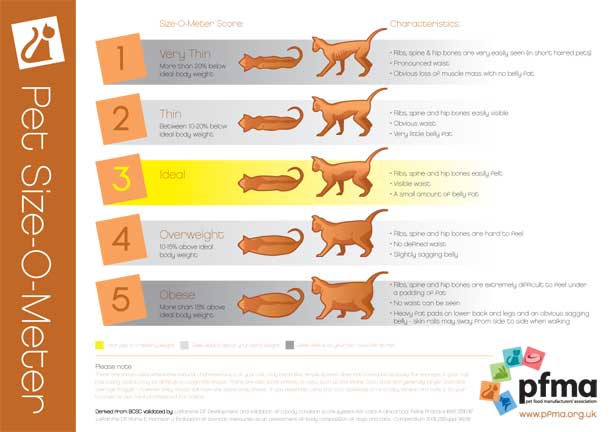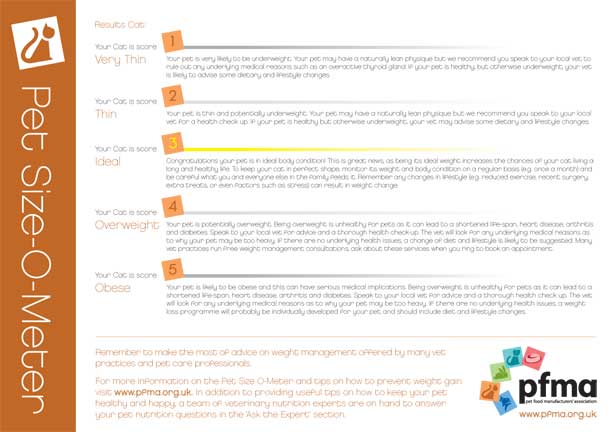A chubby cat is not a happy cat, but how can you tell if your cat is overweight or obese? We find out.
Feeding your cat plenty of food and treats may make you feel like a caring owner and you may not mind if your cat is a bit 'cuddly', but it may lead to fatty tumours, diabetes, arthritis, high blood pressure, liver failure, skin problems and even an early death.
Vet practices say the number of overweight and obese animals is on the increase and a large number have set up dedicated 'fat clinics'.
The RSPCA suggest the problem is due to overfeeding, the wrong diet and a lack of exercise, and the charity is warning pet owners to do something before it is too late. An Internet survey also found that although aware their cat was overweight, 25 per cent of owners had done nothing about it.
RSPCA vet David Grant says: "People who let their pets starve are labelled cruel and callous, but what people don't realize is that overfeeding can cause just as much suffering. A fat cat may look cute and cuddly but in reality you are killing it with kindness.
"Pet obesity is a serious welfare problem and as a nation of so-called animal lovers we have a duty to tackle it now. An animal only needs to be slightly over its ideal body weight for health problems to begin. If you think your pet is overweight consult your vet today and show your animal that you really do care about them."
Good diet
Just like humans, each pet is unique and when choosing a suitable diet it is important that owners take into account age, sex, breed and level of activity.
A spokesperson for the Pet Food Manufacturers' Association says: "'Lifestage' pet foods have been designed to meet the very specific nutritional needs of pets at certain stages of their lives - from early life through adulthood to old age. Responsible pet owners should assess the needs of the pet and feed accordingly."
Top tips
- You should be able to feel your pet's ribs. Stand above your cat and check his waist he should have a visible indentation behind his ribs. Place both hands lightly on your cat's ribs. They shouldn't be sticking out. If you can't feel them, your pet is probably overweight. Also look for pouches of fat between the hind legs.
- Talk to your vet. An underlying medical problem or medication may have influenced the weight gain. Gradually reduce weight through a combination of exercise and fewer calories.
- Weigh your pet regularly and watch for changes. Your vet will tell you what your cat's ideal weight is. Keep a food diary. Record how much you feed your pet - you'll be surprised by how it mounts up. Feeding small amounts daily can help. At your mealtimes keep your pet away from the kitchen so he won't beg.
- Follow the recommended feeding guidelines on food packaging, while bearing in mind his individual needs. Decide on a daily ration of food and if your pet is used to treats, calculate them as part of this amount.
- Avoid feeding human foods, as titbits have a tendency to be high in sugar, fat and salt.
- Don't give him cow's milk; it has hidden calories. If you think that you will be tempted to feed too much, use a smaller bowl.
- Playing with cat helps increase activity and so helps maintain health and fitness.









